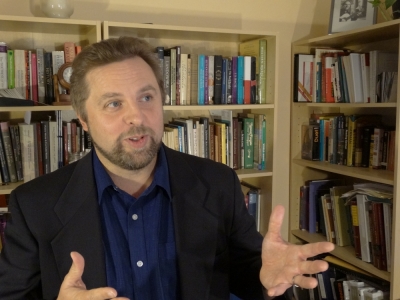Why Trump's Media-Attacking News Conference Worked

"You couldn't turn away." So said Fox News analyst Howard Kurtz about President Trump's one hour, 16-minute news conference at the White House on Thursday. It was a press conference like no other, or in Kurtz's words, the "harshest and most sustained attack on the media by a president of the United States in history."
The discrepancy of opinion and commentary it has since elicited could not be wider, but the mainstream media appear virtually unanimous in characterizing Trump's performance as rambling, misleading, and evasive. This was the conclusion of Conor Friedersdorf of The Atlantic, who argued that the discrepant reactions to Trump's performance was the result of rightwing media spin and lies touted by Rush Limbaugh and Sean Hannity.
I certainly do think that discrepant reactions are in part due to rightwing media, but not for the highly uncharitable reasons provided by Friedersdorf. Rather, I think such disparaging perspectives actually miss altogether what was behind the real effect and potency of the press conference.
One area that is often overlooked when analyzing politics in general and presidential news conferences in particular is the powerful effects of political rituals. While our modern sensibilities often dismiss rituals as something specific to primitive cultures, scholars observe that ritual and ceremony, symbols and myths, actually pervade the politics of the modern nation-state. From the raising up of the American flag on Iwo Jima, to the former Soviet Union's May Day parade in the Red Square, to Whitney Houston's stunning rendition of "The Star Spangled Banner" at the 1991 Super Bowl, ritualized ceremonies convey the symbolic meanings necessary to transform disparate populations into a united people with a common political vision.
The press conference itself was loaded with symbolism. There was Trump, the populist, standing in front of a seated media establishment, hands raised, desperately imploring the president to call upon them. He chose by pointing repeatedly downward, so as to demonstrate who was in control. He could interrupt whenever he wanted to; he could take as long as he liked to answer a question; and the questioning reporter had to sit down when Trump was through with him or her.
Michael Goodwin recognized the ritualistic significance of the president's press conference: "In front of cameras, and using the assembled press corps as props, he conducted a televised revival meeting to remind his supporters that he is still the man they elected."
And who is this man that was elected? He is Trump the populist, the only one who can stand up to the establishment. And who were the participants in this press conference ritual? The establishment media.
One particularly poignant moment was Trump's exchange with CNN White House correspondent Jim Acosta. Not only did Trump lecture him on the dishonesty of CNN, but when Acosta wanted to ask a follow up question, Trump turned to the other reporters and asked: "Should I let him have a little bit more?"
He did, and Acosta followed up with an inquiry into Trump's attack on CNN with the fake news charge.
"I'm changing it from fake news now," the president inserted; "very fake news."
The room erupted in laughter, and even Acosta had to laugh.
Indeed, there was laughter across the nation. Part of the brilliance of the news conference was its timing; by holding the conference midday, it was broadcast live to audiences throughout the nation listening in to rightwing talk radio programs, with play-by-play commentary by the sympathetic hosts.
It turns out Trump didn't have to wait for Saturday's scheduled rally in Florida; rightwing opinion leaders across the country transformed the president's press conference into a mass national political rally. In so doing, Trump wasn't expressing his own dislike for the media; rather, he embodied the nation's disdain for the media, in true populist fashion.
And so, while members of the media may see Trump's press conference as little more than a rambling meltdown, the reality is that their participation actually served to maximize the president's power and prestige. Trump remarked that he won the election by doing news conferences and rallies. Well, at this week's news conference, the two became one.



























